It’s probably not terribly surprising to anyone that there are holes in medieval manuscripts—after all, a millennium-old piece of parchment should expect to see some wear and tear. While countless medieval manuscripts have been lost to time, a large number remain, and in a wide range of qualities. But almost every medieval manuscript has some holes in it somewhere. They may be large or small, accidental or intentional, hidden away in the binding or displayed openly, but they’re there.
Some holes are there before the parchment or vellum (footnote: parchment is made from animal skin, typically sheep, cow, or goat; vellum, the most prized variety, is made specifically from calf skin) is written on:
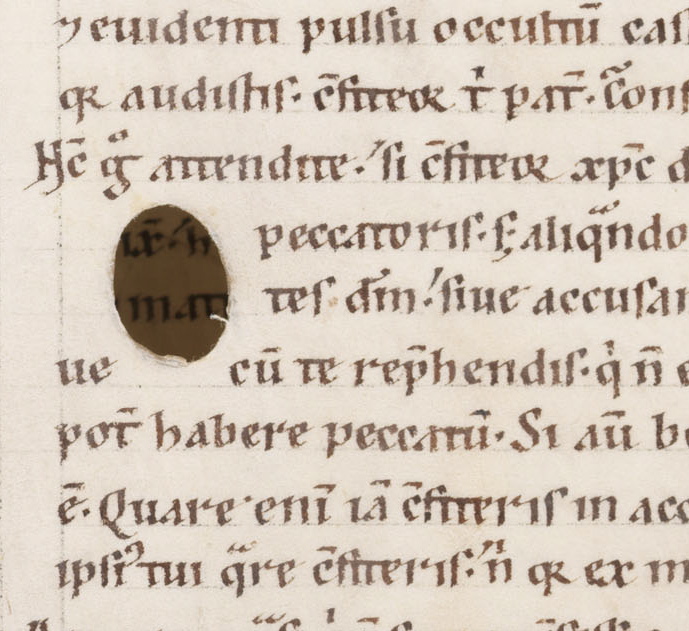
Parchment is made by taking animal skins, removing their hair, and creating a writing surface by stretching and scraping the skin repeatedly over time, until it is the thickness and texture desired. This is a labor-intensive and thus expensive process. So, when a hole formed during the parchment-making process, the product couldn’t very well just be discarded. (However, it should be noted that these holes are not found as often in very expensive manuscripts—we can probably assume that the scribe would select more pristine parchment for more important documents.)
Some holes appear after the scribe’s work is done:
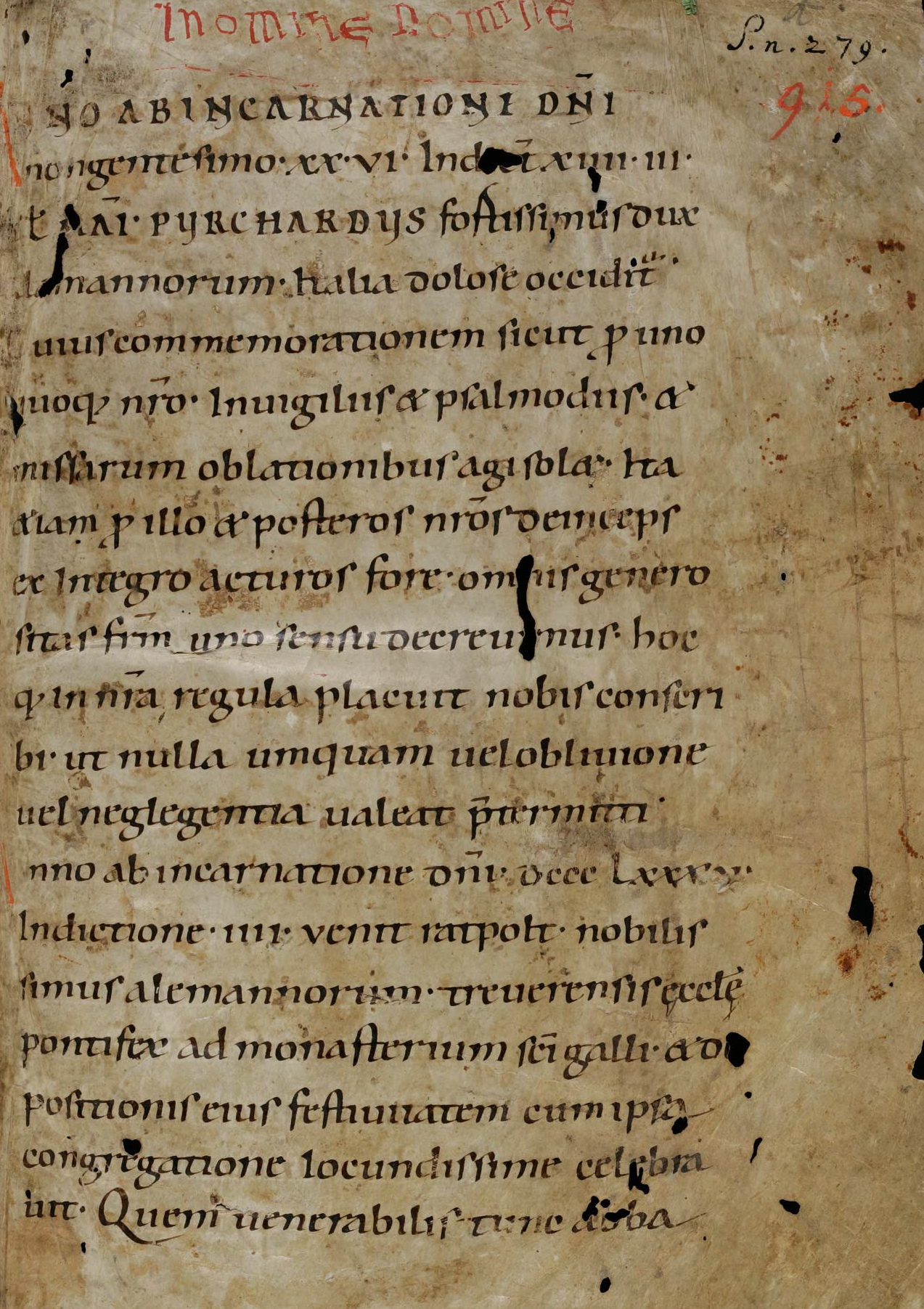
Medieval manuscripts face many dangers. Holes can be caused by insects, fire damage, mold, or perhaps from damage done during the writing, illustration, or binding of a text. Holes were clearly viewed as part and parcel of the medieval bookmaking process. Not only were they often written around, but sometimes they were decorated:
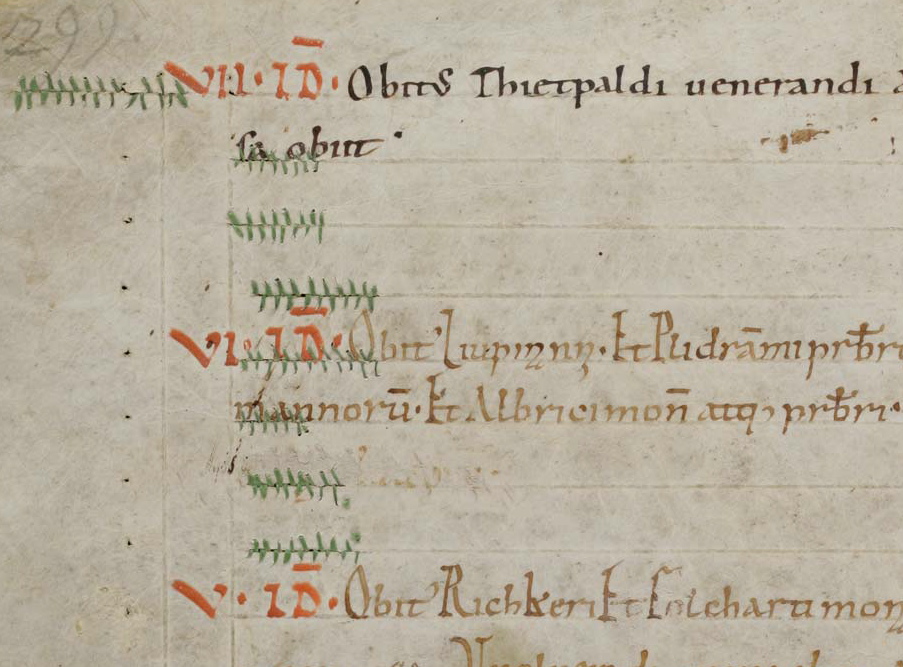
Many manuscripts—it seems particularly common in Continental manuscripts, like this Swiss manuscript from the monastery of St. Gallen—have holes and tears sewn up with colorful thread. Some of these holes were apparently caused by damage from the bookmaking process: these horizontal slits that have been sewn up appear to have been caused by a monk who was ruling the page with too heavy a hand. Others seem to just be from accidental damage:
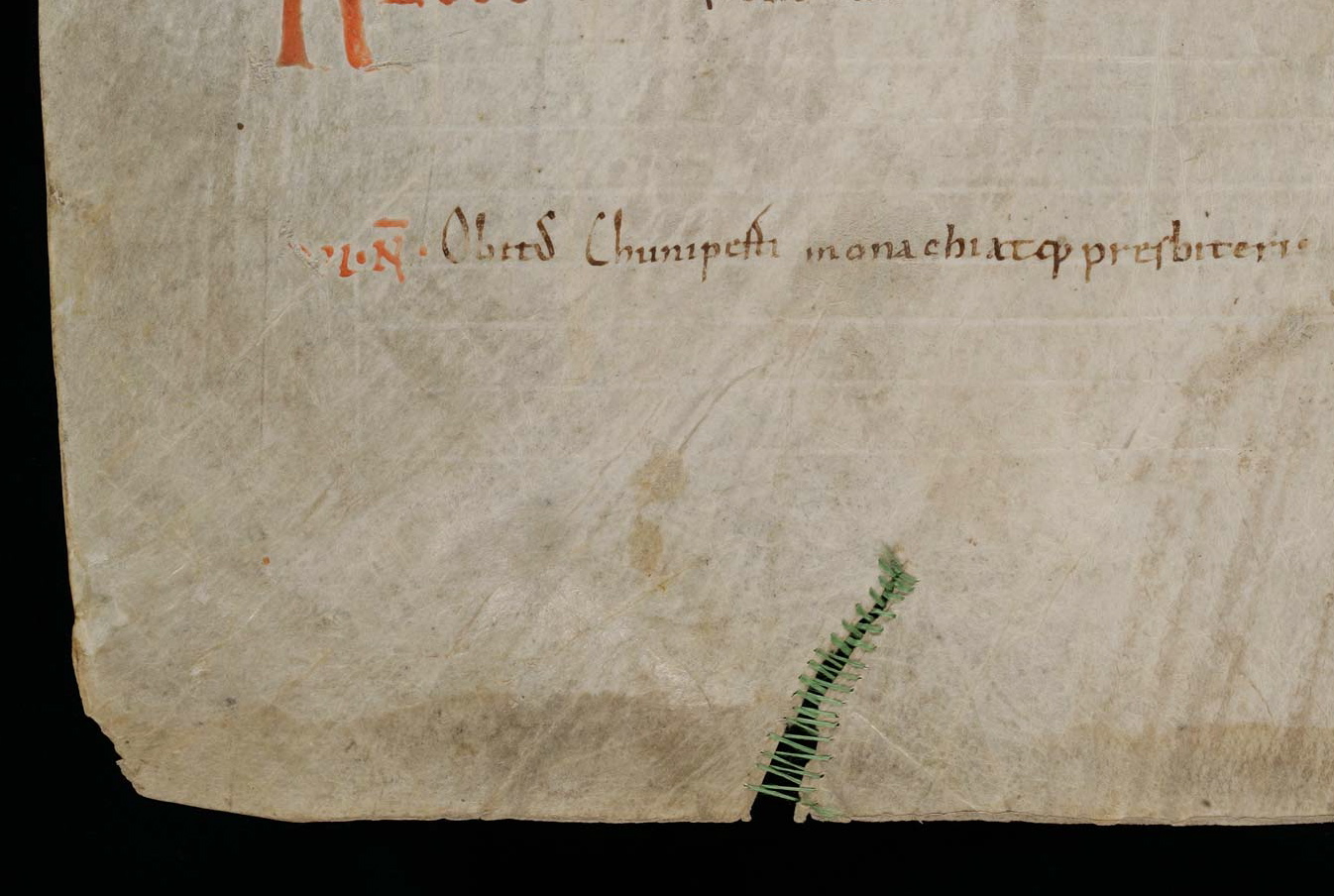
The stitching serves two purposes: to protect the book from further damage, and to add decoration to what might otherwise be seen as unsightly.
And finally, holes are occasionally created for the purpose of decoration:
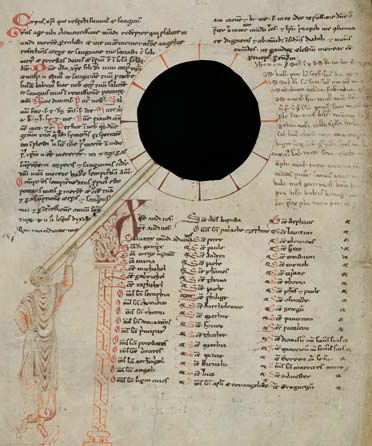
In this manuscript, containing mostly liturgical texts, the illustrator has cut a hole as part of his illustration of the “star clock” (a means to tell time after dark), the invention of which is credited to Pacificus of Verona. It’s impossible to know if this was an ingenious method of using a piece of parchment that already had a hole from some sort of damage, but close observation shows where it has been cut to form the frame of the clock.
Sometimes it’s surprising just how good the condition of most medieval manuscripts is: most, if not all, of the manuscripts we still have today have survived damp, fire, insects, or wars (if not a combination). We can’t really begrudge them a few holes.
Marjorie Housley
PhD Candidate
Department of English
University of Notre Dame
